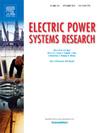Multi-phase unbalanced AC–DC distribution system state estimation with benders decomposition
IF 3.3
3区 工程技术
Q2 ENGINEERING, ELECTRICAL & ELECTRONIC
引用次数: 0
Abstract
State estimation for distribution system is an essential tool for monitoring and control operations such as energy management, Volt-VAR optimization, and load management. Therefore, the distribution system needs an effective monitoring system. However, the advancement in information and communication technology (ICT), such as advanced metering infrastructures and synchrophasors, has made the distribution system more observable and therefore, relatively convenient for state estimation. Moreover, monitoring the distribution system is challenging due to its unbalanced & multi-phase nature, limited measurements, and numerous nodes. The topological challenges for distribution systems include network configuration, such as weakly meshed and radial networks. The distribution system has a resistance-to-reactance ratio greater than one, which makes it prone to ill-conditioning. Further, imposing the additional challenge of Jacobian matrix inversion, which causes difficulty to apply the gradient-based optimization methods. On the other hand, the distribution networks accommodate the distributed energy resources, AC power flow and DC power flow forming an integrated network of AC–DC distribution. The AC–DC systems are coupled with power electronics converters. Therefore, a combined state estimation technique with an AC–DC system is necessary for effective monitoring and control decision-making. There is a challenge for combined AC–DC systems owing to topological characteristics and modelling of the power electronics converters for steady-state operation along with their control strategy. Thus, the simplified power electronics converter models are developed in this work for AC–DC distribution system state estimation (DSSE). However, DSSE is a mathematically intensive large-scale optimization problem and requires a substantial computational resource. Mathematical complexities include ill-condition Jacobian matrix inversion and time complexity challenges for large-scale optimization. The estimation problem formulated as a non-linear mathematical program adds the computational burden for the large-scale optimization problem. The other challenges, such as structural and mathematical complexity, have provided the pathway for decomposing larger problems into smaller sub-problems for improved efficiency in solving optimization problems. Hence, this work proposes the DSSE formulation as a linear optimization problem for the unbalanced multi-phase AC–DC distribution system. This work proposes a Benders decomposition-based AC–DC DSSE algorithm to address the above challenges and improve efficiency of solving the large-scale DSSE optimization problems. To demonstrate the effectiveness of the proposed DSSE algorithm, it is implemented on the distribution test system having the radial and meshed configurations with unbalanced network condition such as the IEEE 33-node system, modified IEEE 13-node, and IEEE 123-node unbalanced multi-phase AC–DC distribution systems. The accuracy of the proposed algorithm is compared with the existing literature, showing robustness to noise and ill-conditioned network. The developed method is implemented on large-scale network demonstrating the scalability and ease of implementation.
求助全文
约1分钟内获得全文
求助全文
来源期刊

Electric Power Systems Research
工程技术-工程:电子与电气
CiteScore
7.50
自引率
17.90%
发文量
963
审稿时长
3.8 months
期刊介绍:
Electric Power Systems Research is an international medium for the publication of original papers concerned with the generation, transmission, distribution and utilization of electrical energy. The journal aims at presenting important results of work in this field, whether in the form of applied research, development of new procedures or components, orginal application of existing knowledge or new designapproaches. The scope of Electric Power Systems Research is broad, encompassing all aspects of electric power systems. The following list of topics is not intended to be exhaustive, but rather to indicate topics that fall within the journal purview.
• Generation techniques ranging from advances in conventional electromechanical methods, through nuclear power generation, to renewable energy generation.
• Transmission, spanning the broad area from UHV (ac and dc) to network operation and protection, line routing and design.
• Substation work: equipment design, protection and control systems.
• Distribution techniques, equipment development, and smart grids.
• The utilization area from energy efficiency to distributed load levelling techniques.
• Systems studies including control techniques, planning, optimization methods, stability, security assessment and insulation coordination.
 求助内容:
求助内容: 应助结果提醒方式:
应助结果提醒方式:


